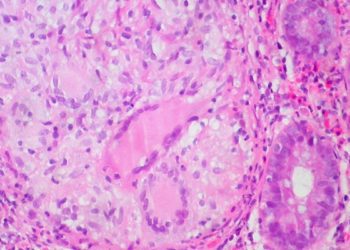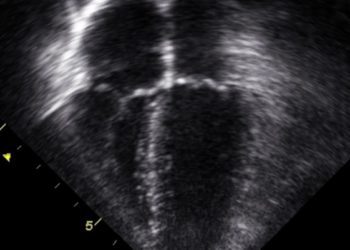Couple-based intervention may be more effective in the management of type 2 diabetes in adults
1. A couple-based intervention strategy for Chinese adults with type 2 diabetes mellitus (T2DM) showed greater decreases in HbA1c in patients with a high baseline HbA1c compared to an individual-based intervention strategy.
Evidence Rating Level: 1 (Excellent)
Study Rundown: The management of diabetes is complex and multifactorial, with recent guidelines placing increasing emphasis on the roles of family members and spouses. However, the evidence supporting the role of spousal involvement in diabetes care is limited. This randomized clinical trial therefore sought to investigate the effectiveness of a couple-based intervention strategy for the management of T2DM in older Chinese adults with T2DM compared to an individual-based intervention strategy.
In this multicentre randomized clinical trial, 207 couples from 14 centres in Guangzhou, China were randomized to receive either a couple-based group education and training session or an individual-based group education and training session. Participants received 4 weekly sessions in total with the primary outcome for the patients being their HbA1c level, and the primary outcome for spouses being health-related quality of life as measured by the 36-Item Short Form Health Survey (SF-36). Follow-up assessments were conducted at 6 and 12 months. At 12 months, patients’ HbA1c levels decreased in both arms, but the changes were not statistically significant in either arm or between arms. However, by subgroup analysis based on baseline HbA1c, patients with a high baseline HbA1c (≥8.0%) experienced a significant between-arm difference in reduction in HbA1c. No statistically significant differences in health-related quality of life were found in patients or their spouses as measured by the SF-36.
Overall, this study found that the use of a couple-based intervention strategy had limited effect compared to an individual-based intervention strategy in the management of T2DM, but did have benefits in patients with poor baseline glycemic control.
Click to read the study in JAMA Network Open
Relevant Reading: Two for one? Effects of a couples intervention on partners of persons with Type 2 diabetes: a randomized controlled trial
In-Depth [multicentre randomized controlled trial]: Current barriers to effective control rates of T2DM may include shortages of healthcare workers and poor self-management and health literacy in adults living with T2DM. While the management of diabetes is complex and multifactorial, recent guidelines have placed increasing emphasis on the roles of family members and spouses in particular. However, the evidence supporting the role of spousal involvement in the management of T2DM is limited and studies have never before been conducted on Chinese populations. This randomized clinical trial therefore sought to investigate the effectiveness of a couple-based intervention strategy for the management of T2DM in older Chinese adults with T2DM compared to an individual-based intervention strategy.
Between September 1, 2020 and June 30, 2022, 207 couples (mean[SD] age of patients, 66.0[6.5] years; 50.7% male) from 14 centres in Guangzhou, China were randomized to receive either a couple-based group education and training session or an individual-based group education and training session. Patients were eligible if they had confirmed T2DM and were 55 years of age or older. Participants received 4 weekly sessions covering topics including exercise, diet and diabetes complications with the primary outcome for the patients being their HbA1c level. The primary outcome for spouses was their health-related quality of life as measured by the 36-Item Short Form Health Survey (SF-36). Follow-up assessments were conducted at 6 and 12 months. At 12 months, patients’ HbA1c decreased in both arms but did not reach statistical significance in either arm. Changes in baseline HbA1c did not reach statistical significance between arms at 6 months (β = −0.01 [95% CI, −0.52 to 0.50]) and 12 months (β = −0.08 [95% CI, −0.57 to 0.42]). Decreases in HbA1c were more constant and longer lasting in patients with a baseline HbA1c greater than or equal to 8.0%, with a significant between-arm difference in subgroup analysis based on baseline HbA1c (P < .001 for interaction). SF-36 scores remained stable over time.
Image: PD
©2025 2 Minute Medicine, Inc. All rights reserved. No works may be reproduced without expressed written consent from 2 Minute Medicine, Inc. Inquire about licensing here. No article should be construed as medical advice and is not intended as such by the authors or by 2 Minute Medicine, Inc.







